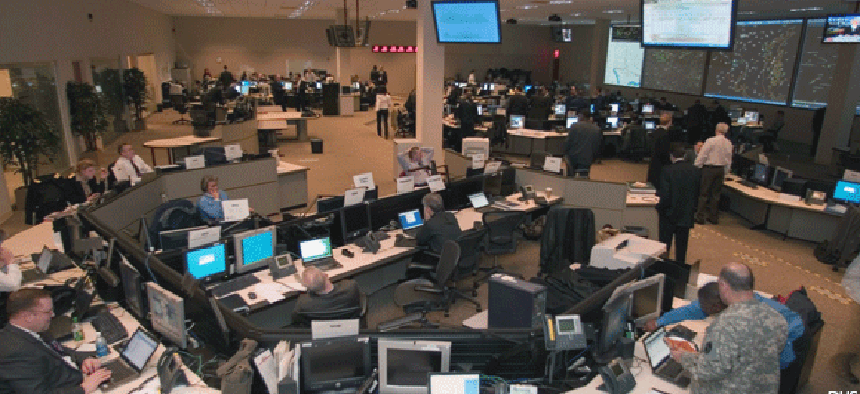Infrastructure maintenance takes largest piece of DHS IT spending pie


Connecting state and local government leaders
Much of the focus at the Department of Homeland Security has been on improving data sharing among agencies, according to IDC Government Insights.
The Department of Homeland Security, formed in the wake of the Sept. 11, 2001 terrorist attacks, has struggled to meld the disparate IT infrastructures of the agencies it inherited into an integrated whole. And judging by its most recent spending projections, the wrestling continues.
On average, according to a recent report from International Data Corp. (IDC), government agencies spend around 75 percent of their IT budget on operating and maintaining legacy systems, with the rest going to modernizations or new IT. DHS puts just over 16 percent of its annual IT budget toward new systems and modernization.
Much of the focus at DHS has been on improving data sharing among agencies, said Shawn McCarthy, research director at IDC Government Insights, and DHS realizes it needs a certain number of systems to do that. But “getting that down to an absolute enterprise architecture standard” is a challenge for any agency, he said.
“Trying to tie together all of the various systems they need means having to spend more on legacy systems, because it’s difficult to simply replace this big mainframe system or that sprawling network of servers,” he said. “But at some point it will be easier to buy or build a new system than take another slice of an older one.”
The department outlined its “One Network, One Infrastructure, One DHS” vision in 2005, establishing the Infrastructure Transformation Program (ITP) as the driver for a DHS-wide consolidated IT infrastructure. It included such things as data center consolidation and the creation of OneNet, a single wide-area network that would service all of DHS.
Progress has been made. Data centers are being consolidated toward the goal of just two secure and geographically separate centers. And OneNet, which received its original authority to operate in 2005, was mostly up and running by 2011.
Nevertheless, according to the department’s Inspector General in a 2012 report, “creating a unified IT infrastructure for effective integration and agencywide management of technology assets and programs has been a challenge.”
That’s reflected in the breakout of the fiscal 2014 DHS budget. Of the $5.7 billion available for hardware, software and IT services, according to IDC, fully $4.1 billion of that is targeted for hiring outside integrators, for hosted services and for custom software development.
Drilling down further into the budget, IDC finds IT infrastructure maintenance will take up the largest slice of the pie at nearly $2.2 billion, though McCarthy said that category tends to be a “catch-all bucket” for agencies when they can’t put their finger on how to precisely define where investments are going.
More specifically, the next biggest allocations are IT solutions for border and transportation security, which are slated to receive $783 million, and those for intelligence, surveillance and reconnaissance at $595 million. That shows that DHS probably has its ducks correctly lined up, McCarthy said, since no other department on the civilian side has these responsibilities.
“Seeing these slices of the IT pie grow tells me DHS is focusing its efforts on the systems and solutions that are proper for its mission,” he said.
With a nod toward the increasing emphasis by the DHS on cybersecurity IT activities, spending on threat and vulnerability management takes up 6.7 percent of the fiscal 2014 total.
Another area at DHS that’s behind the average of other government organizations is investment in cloud services, with just 1.2 percent of the total targeted for those against an average of nearly double that elsewhere in government.
DHS officials have previously described a “two-cloud” strategy for the department, with email going to a private DHS cloud, and services such as public facing Web sites going into public clouds.
One reason for the slower cloud spend at DHS might be a continuing reluctance to move highly classified data to the cloud, McCarthy said, though that will likely change in the future as trust in the cloud grows along with the evolution in security standards.
An area that should see a significant uptick will be investments in new and upgraded DHS IT systems at the state and local level, IDC said, since the current regional systems may not be robust enough to integrate new data collection efforts by police departments and other municipal departments.




